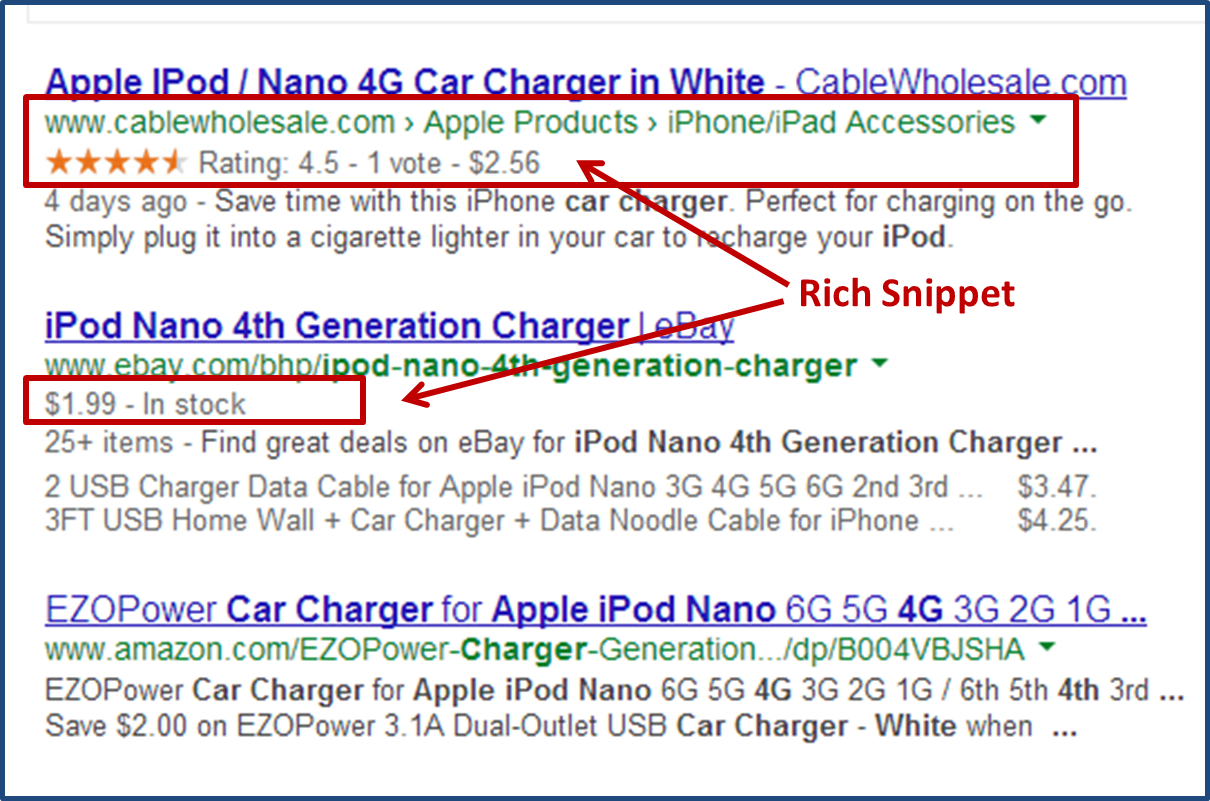Ecommerce SEO: A user’s journey from search to purchase
Appearing in search results is vital for any ecommerce business, but with massive companies like Amazon and eBay dominating things, smaller businesses need to get clever if they’re to compete. In this guide we’ll look at the user’s journey from search to purchase and how to ensure the process is aligned with your search engine optimisation (SEO) efforts.
Long tail keywords
The first step is to decide what keywords you’re going to focus on. Long tail keywords refer to search terms that typically consist of four or more words. Big ecommerce sites tend to focus their efforts on shorter, more valuable phrases. That means if smaller sites focus on the long tail, then they can steal a march on their bigger rivals.
So, for example, the results for the search term “men’s running shoes” are dominated by big-name brands such as Sports Direct. However, for longer terms such as “Men’s running shoes for flat feet” there is more variety in the search results, meaning smaller sites have a chance of ranking.
It’s true that these longer terms aren’t searched for as often as their shorter counterparts, but then there’s little point in trying to optimise for high-traffic keywords if you’re going to be kept off the first page of results by bigger rivals.
In order to understand which keywords you should be targeting, conduct some keyword research. You can find out how to do that with this guide.
The user journey
Step one – Searching on Google
Not all Google results are equal and although it’s true that the top result will usually get the majority of clicks, there are ways of making your listing more attractive to potential customers. Let’s look at the information that is returned when someone makes a search and how you can optimise it to get the maximum number of clicks.
Your search engine snippet consists of:
Title: This should be highly relevant to the content of the page and should mention the product at the beginning. Google only displays around 70 characters of a title on desktop. So make sure that your titles aren’t cut off. Unfortunately, it’s a bit more complicated than just counting characters. Fortunately, you can use Moz’s title tag tool to see what a particular title will look like in Google’s search results. That link also contains a guide explaining more about how Google displays title tags.
Since a user will see the title, you need to make sure their possible query words are present in your title but you should also write a title that’s more like a sentence than a list of keywords. Try and include the product name and category name where possible.
You should also ensure the titles you use are unique – even titles that differ by just one word (such as colour or size) are too similar and will not bring in much value. You can check for duplicate titles using the 123 Reg Search Engine Optimiser tool.
Description: This provides more space to present your product and you should do it in an enticing way as it’s your one chance of making a new user click your listing rather than a competitor’s. Use it to explain what makes shopping on your site better than other websites – mention things like free delivery, special offers and so on. Take note of what your competitors are doing and use that information to differentiate your business from theirs.
Try to make sure the description isn’t much longer than 150 characters. Read Five SEO-friendly ways to attract new customers to learn more about making your meta descriptions sell for inspiration.
URL: Make sure your URLs are descriptive and contain the product name for sale on that page.
Also make sure your site’s structure is a logical one and your main keywords are present in the URL of each product.
You should also implement breadcrumbs to make your URLs look better in search results. Breadcrumbs are used to help people navigate a site more easily. The top example is a site which hasn’t implemented breadcrumbs, while the example below that is one that has. Which result would you be more likely to click on?
Learn more about SEO-friendly URLs and check out Google’s tutorial on breadcrumbs.
Rich Snippets: Rich snippets allow you to highlight information which people may find interesting or useful. You can mark-up product pages so that Google knows that a product is being sold on that page. Doing so can lead to a rich snippet as seen below. If people can see you offer a great price and have the product in stock, they’ll be more likely to click to your site.
By marking up your products you can show ratings, prices and offers directly into the search results thus having a better chance of getting a click from a user.
Step two – The user is on your site
Once the user is on your product page you need to make sure that page matches the information provided in the search snippet they’ve just clicked on. Here are the elements you need to pay attention to.
Main title: The page’s main title (marked up with the H1 tag) should contain the same keywords as your meta title. The exact text might vary slightly for example you could have the meta title “running shoes” and the main heading “shoes for runners”. The important part is that visitors can quickly see the page is relevant to what they were searching for.
Product description: If the search snippet enticed the user to click for more information you need to make sure you provide this through a product description.
Most ecommerce websites use the same description that the manufacturer does which creates duplicate content. Always aim to create unique product descriptions, although it involves a lot of work it really pays off especially if you write them in the tone of voice your users would expect from your site as manufacturer descriptions are often technical or impersonal. You can learn more about writing good product descriptions here.
Images: Ecommerce websites also have a lot of images in order to better present each product.
It’s better to create your own images and not reuse any from other websites. Also make sure the image size is as small as possible without affecting the image quality in order for your pages to load faster. You can use this tool to optimise your images without losing quality.
Loading speed: Make sure your product pages don’t have any unnecessary commented code, large images, broken URLs, redirected URLs or any other elements that can slow down the loading time. Check your page load speed here and see what improvements you can make.
Duplicate content: Most ecommerce websites have the same problem – highly similar pages that differ in small ways because of product variations such as colour, size etc. Use canonical tags or have all colours/sizes on the same URL to avoid duplicate content issues. Use canonical tags for session IDs and any other URLs that have parameters.
Step three – convincing users
Hopefully, your search snippets and landing page will have gone a long way to convincing people that you’re the right company to buy from, but there are always going to be people who aren’t certain. You need to do as much as possible to convince visitors that your business and product is what they need.
An excellent way to do this is through reviews. With 61% of people checking reviews before they buy and reviews leading to an 18% increase in sales after they’ve been implemented, it’s clear how useful they can be. Make sure people can leave reviews on all your product pages. You can learn more about how to encourage people to leave reviews with this guide.
Step four – the customer is interested in something else
Shoppers won’t always know exactly what they want or may be considering a number of possible purchases. For example, someone may be weighing up the pros and cons of different brands of running shoes. The best thing to do here is use category pages so someone can quickly navigate to related products. If a visitor can easily look at the products they’re interested in on your site, they’re less like to go back to a search engine and end up on the site of a rival.
Here’s how you should set up these category pages.
• Optimise for category specific keywords and not for product specific keywords.
• Make sure you have a main heading (H1) that uses the category keywords.
• The category pages should also have great content just like product pages. Try to cover the answers to possible customer questions about that product in general thus offering valuable information. Don’t just add content for SEO purposes as that will just offer a bad user experience. You can see some examples of great category pages here.

Step five – Mobile optimisation
Searches made from mobile devices have overtaken those made from desktop computers. It’s now vital your site looks good and can be navigated easily by someone on a mobile device. However, there are also other things you should be doing to make it easier for mobile users to buy from you.
Offer social logins: Mobile users have all sort of social apps already logged in on their phones so you can offer a quick sign-up through Facebook, Twitter or Google. Since completing sign-up fields on a mobile is quite hard to do, you can avoid users abandoning the sign-up process, and hence their purchase, by allowing them to login with their social accounts.
Since you’re using social accounts for login, make sure to also have the social sharing buttons in sight – since users are already logged in they can quickly share their purchase or desired products.
Offer alternative payment options: Pick ones that are easy to use from a mobile phone such as PayPal or Google Wallet.
Display products in various ways: Since a mobile screen is smaller than a desktop, your product images will be less likely to convince people to buy from you. Try adding different types of media that can help mobile users get a better view of the product such as a 360 presentation, a video or even images of the product in use. Make sure all images can easily be zoomed in since the screen is smaller and details might not be available on a normal size picture.
Reduce content on mobile pages: To avoid too much scrolling your mobile pages should only show the essential parts of your desktop pages. The product should be the star of the mobile page, you should only keep the content that’s highly relevant and interesting for your users. Content is still important, but as space is at a premium, you need to make sure you show mobile users what they want to see and don’t crowd the page with things that aren’t useful.
Still need help? If you or anyone you know are struggling to get to grips with SEO, why not try out free online SEO course? It’s a really easy way to get to grips with a complex topic.




